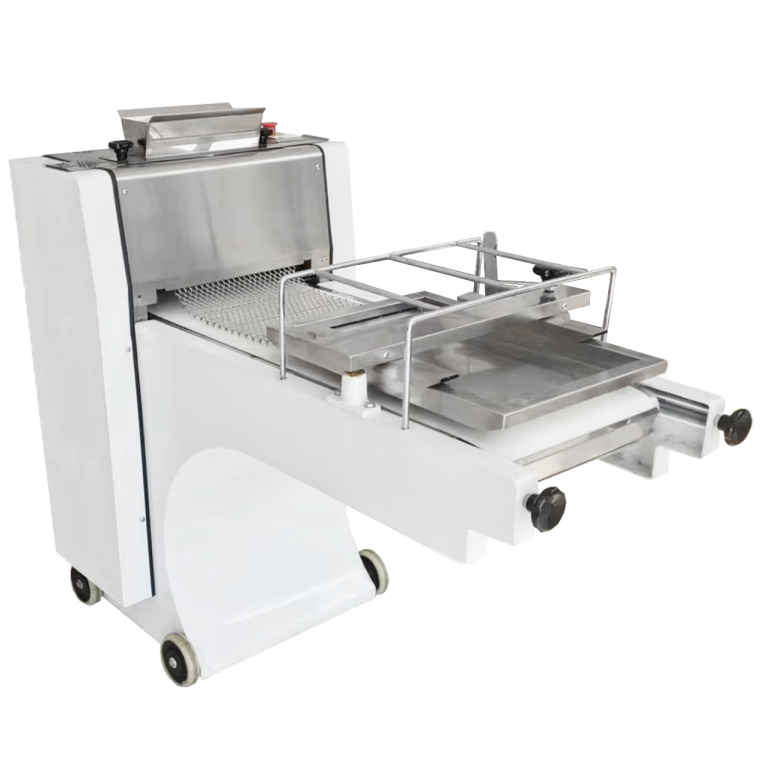Transforming Bakery Operations with Advanced Dough Processing Technology
The modern bakery landscape has evolved dramatically, with technology playing a pivotal role in streamlining operations and maximizing output. At the forefront of this evolution, dough sheeters improve production efficiency by automating one of the most labor-intensive aspects of baking: dough rolling and shaping. These sophisticated machines have become indispensable tools in commercial bakeries, fundamentally changing how bakers approach their craft while maintaining product quality and consistency.
As bakeries face increasing demand and pressure to optimize their operations, the integration of dough sheeters has emerged as a critical solution. These machines not only accelerate production processes but also ensure uniform results that meet exact specifications, leading to enhanced product quality and customer satisfaction.
The Mechanics Behind Efficient Dough Processing
Advanced Technical Features of Modern Dough Sheeters
Modern dough sheeters are engineered with precision components that work in harmony to deliver superior results. The primary mechanism consists of adjustable rollers that gradually compress dough to desired thicknesses. These rollers are typically made from high-grade stainless steel, ensuring durability and consistent performance throughout extended production runs.
The sophisticated control systems in contemporary dough sheeters allow operators to program specific thickness settings, speeds, and processing times. This level of control ensures that dough sheeters improve production efficiency by maintaining precise specifications across entire batches, eliminating variations that often occur with manual rolling.
Automated Features Driving Productivity
Today's dough sheeters incorporate automated features that significantly enhance operational efficiency. These include automated belt systems that transport dough through multiple passing stages, programmable thickness reduction sequences, and automatic flour dusters. These features work together to minimize human intervention while maximizing output quality.
The integration of digital controls and memory functions allows bakeries to save and recall specific product settings, ensuring consistency across different production runs and operators. This standardization is crucial for maintaining product quality while dough sheeters improve production efficiency throughout the workday.
Quantifiable Benefits in Production Operations
Time and Labor Optimization
The implementation of dough sheeters in bakery operations can lead to remarkable improvements in production time and labor utilization. What traditionally took hours of manual labor can now be accomplished in a fraction of the time. Bakeries report significant reductions in production time, often seeing efficiency gains of 50% or more when dough sheeters improve production efficiency in their operations.
Labor costs are substantially reduced as fewer staff members are needed to handle dough processing tasks. This allows bakeries to reallocate their workforce to other valuable activities such as product development, quality control, or customer service, further enhancing overall operational efficiency.
Quality Control and Consistency Improvements
One of the most significant advantages of utilizing dough sheeters is the unprecedented level of consistency they bring to the production process. Every sheet of dough emerges with uniform thickness, texture, and dimensions, eliminating the variations that naturally occur with hand-rolling methods.
This consistency translates directly to the final product quality, resulting in baked goods that look and taste the same every time. When dough sheeters improve production efficiency, they simultaneously enhance product standardization, leading to higher customer satisfaction and reduced waste from inconsistent products.

Economic Impact on Bakery Operations
Return on Investment Analysis
Investing in dough sheeters represents a significant capital expenditure, but the return on investment often justifies the initial cost. Bakeries typically experience payback periods ranging from 12 to 24 months, depending on their production volume and operating hours. The financial benefits become evident as dough sheeters improve production efficiency across multiple aspects of operations.
Cost savings materialize through reduced labor expenses, decreased waste, and improved energy efficiency. Additionally, the ability to increase production capacity without proportionally increasing overhead costs contributes to higher profit margins and better business scalability.
Long-term Financial Benefits
The long-term financial advantages of implementing dough sheeters extend beyond immediate operational improvements. Bakeries can expand their product lines, take on larger orders, and maintain competitive pricing structures while ensuring profitability. The consistency in product quality also helps build brand reputation and customer loyalty, contributing to sustainable business growth.
As dough sheeters improve production efficiency year after year, bakeries can better predict and control their operating costs, making more informed decisions about expansion and investment opportunities. This predictability is invaluable for long-term business planning and strategic development.
Environmental and Sustainability Advantages
Reduced Food Waste
Modern dough sheeters contribute significantly to sustainability efforts by minimizing food waste in bakery operations. The precise control over dough thickness and shape results in optimal material usage, reducing trim waste and ensuring maximum yield from raw ingredients. When dough sheeters improve production efficiency, they simultaneously support environmental sustainability goals.
The reduction in waste extends beyond just dough materials. Better process control means fewer rejected products due to inconsistencies, leading to decreased overall waste throughout the production cycle. This efficiency not only benefits the environment but also positively impacts the bottom line.
Energy Efficiency and Resource Conservation
Contemporary dough sheeters are designed with energy efficiency in mind, incorporating features that optimize power consumption while maintaining high performance. The automated nature of these machines means they operate at peak efficiency throughout their runtime, avoiding the energy wastage often associated with manual processes.
Additionally, the precise control over production timing and output means bakeries can better manage their resource usage, from ingredients to utilities. As dough sheeters improve production efficiency, they help create a more sustainable operation that aligns with modern environmental consciousness.
Frequently Asked Questions
How quickly can a bakery expect to see improvements after implementing a dough sheeter?
Most bakeries observe immediate improvements in production speed and consistency within the first week of implementation. However, maximum efficiency is typically achieved after 2-4 weeks as staff become fully trained and comfortable with the equipment. The full economic benefits usually become apparent within 3-6 months of operation.
What maintenance requirements should bakeries consider for dough sheeters?
Dough sheeters require regular cleaning after each use, daily basic maintenance checks, and scheduled professional maintenance every 3-6 months depending on usage volume. Proper maintenance ensures optimal performance and extends the equipment's lifespan, maximizing the return on investment.
Can small bakeries benefit from investing in dough sheeters?
Yes, even small bakeries can significantly benefit from dough sheeters. While the initial investment might seem substantial, the efficiency gains, labor savings, and consistency improvements can make it worthwhile for operations producing as little as 50-100 pounds of dough daily. Many manufacturers offer compact models specifically designed for smaller operations.
How do dough sheeters affect the final product quality?
Dough sheeters typically enhance final product quality by ensuring consistent dough thickness and proper gluten development through the sheeting process. This results in improved texture, more even baking, and better overall appearance of the finished products. The precise control over dough handling also helps maintain proper temperature and prevents overworking.


